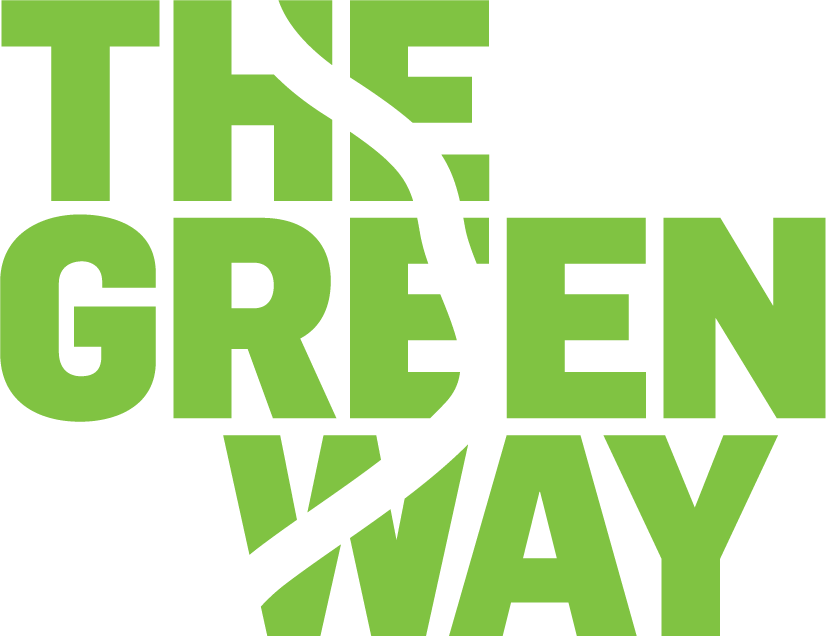steel, soil from Zipporah Potter Atkins’ land, collaboratively-sourced soil, earth, pigment
August 2024 – October 2025
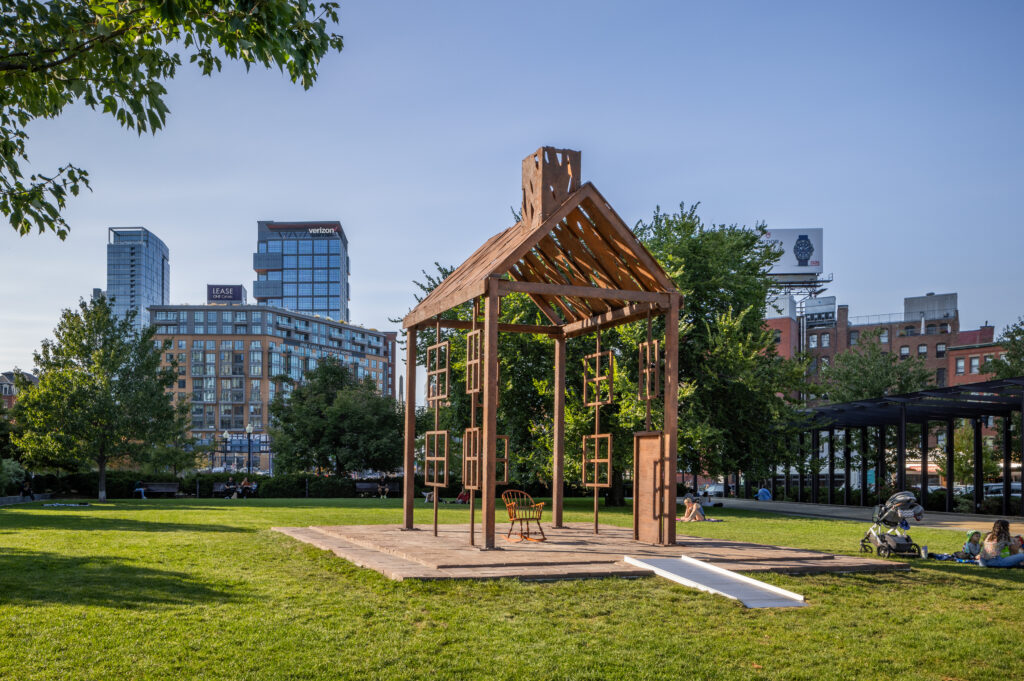
“Dear community, can we go to ground together?”
Going to Ground is a site-specific project by artist LaRissa Rogers that responds to and engages with the history of Zipporah Potter Atkins. In 1670, Potter Atkins became the first-known Black woman to own a home in Boston. She remained the home’s sole deed-holder for the thirty years she lived there, until selling it in 1699. Potter Atkins’ home rested on land now cared for by The Greenway at Cross and Hanover Streets in Boston’s North End. This history was brought to light in 2010 by Dr. Vivian Johnson, Professor Emerita of Boston University, after 6 years of archival research.
A Sculpture Crafted from Soil
Fabricated with steel and earthen soil blocks, Going to Ground offers an echo of Potter Atkins’ home that resonates with Boston’s contemporary realities. Based on an artistic rendering created from historical records, the sculpture stands at two-thirds the size of the original house.
For the home’s roof awning, Rogers developed a unique “scarification” pattern which creates only partial shelter from the sun and rain, touching upon the current-day precarity of homeownership for Black and Brown communities in Boston and across the US. It also references the scar-like form and history of The Greenway itself, a park built over and upon the painful displacement of communities of color during the initial highway construction project.
As part of this project, Rogers hosted an Open Call for Soil, an invitation to Boston’s communities to gather and contribute soil from spaces meaningful to them. Participants sent in soil from over 15 different states and countries, including Massachusetts, Virginia, California, Alaska, and Italy, among others. The collected soil was then used to craft the earthen soil blocks for the sculpture’s foundation, a gesture of collective support, communal residence, and tangible affirmation of Zipporah Potter Atkins’ life and story in Boston’s public memory.
Rogers envisions this work as a way of enacting scholar Vanessa Agard Jones’ call to collectively go to ground: a liberatory practice that asks how we might create new modes of relation with ground/groundedness that prioritize survivance, sovereignty, and freedom.
As the sun moves through the sky above the sculpture, the shadow of scarification is cast onto the landscape, transforming the sculpture into a sundial and reminding us of the generative possibilities that abound in the practice of going to ground.
Inspiration for Going to Ground
“Soil has the capacity to hold histories of trauma, and also produce life,” shares Rogers. “It is a site of possibility, a living archive, a material that speaks in and on its own time. Like soil, processes of repair move slowly,” she continues. “In the wake of archival and state failures to attend/tend to Black life, we look to deepen our understanding of Zipporah Potter Atkins’ life in spaces of impossibility and imagine what’s possible through our shared attention. Going to Ground borrows its title directly from Vanessa Agard Jones, who proposes that we to shift our focus towards the fertile and generative potential of groundedness as a space for feeling, thinking, and practicing towards a possible and insistent commons.”
The final sculptural artwork will open on The Greenway in August 2024 via a performance and community picnic. Throughout the project’s lifetime, collaborating artists Jackie Amézquita and Zalika Azim will activate the sculpture with performances and interventions.
Photo Credit: Osemwenkhae Studios
Graphic Design: Chen Luo
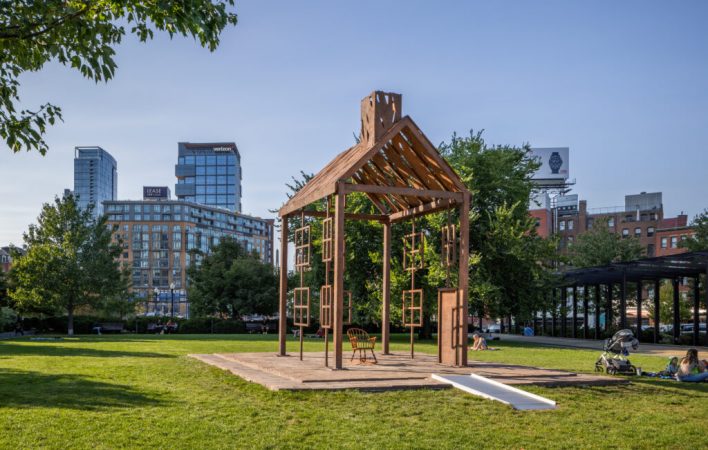
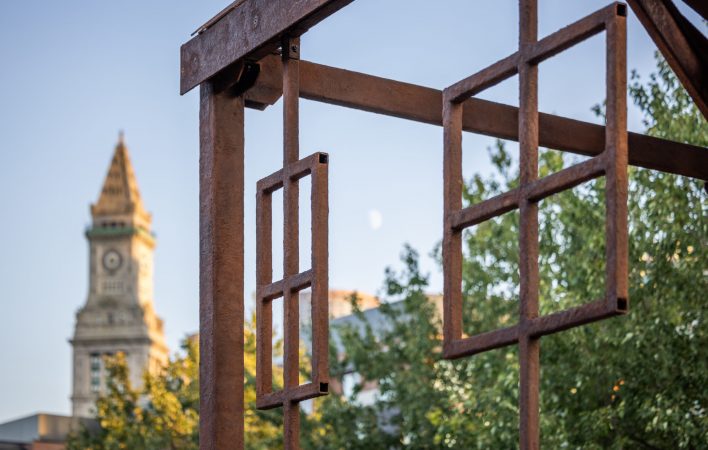
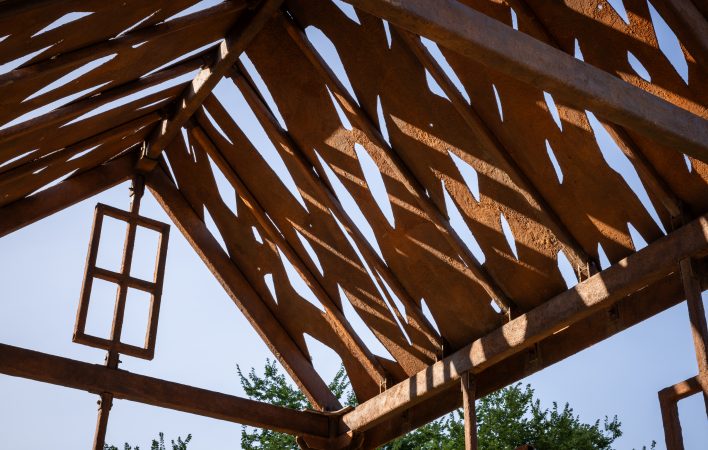
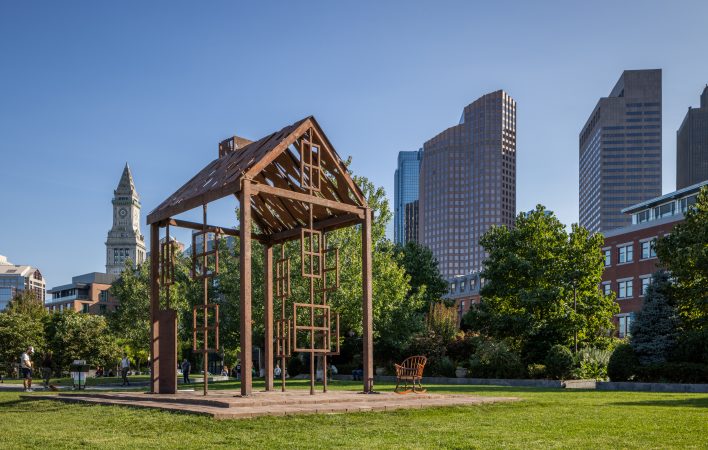
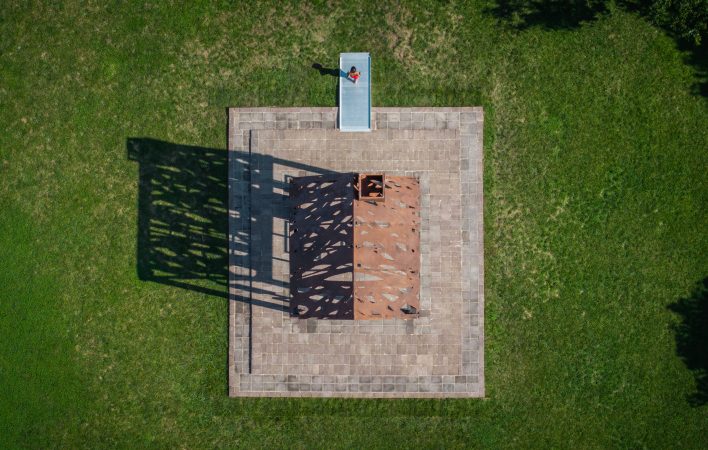
How to Send In Soil
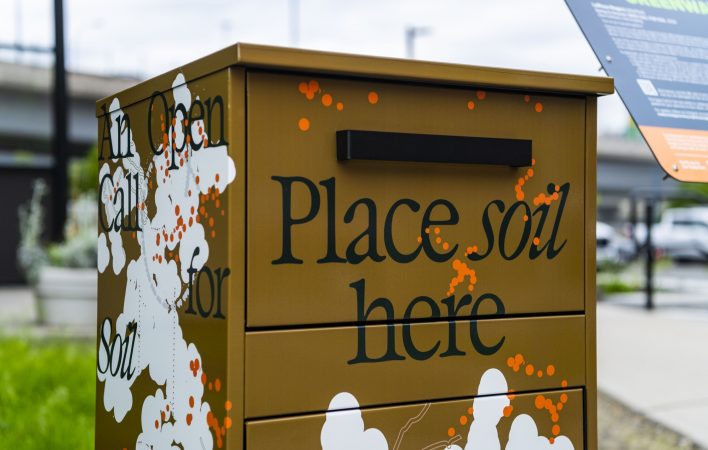

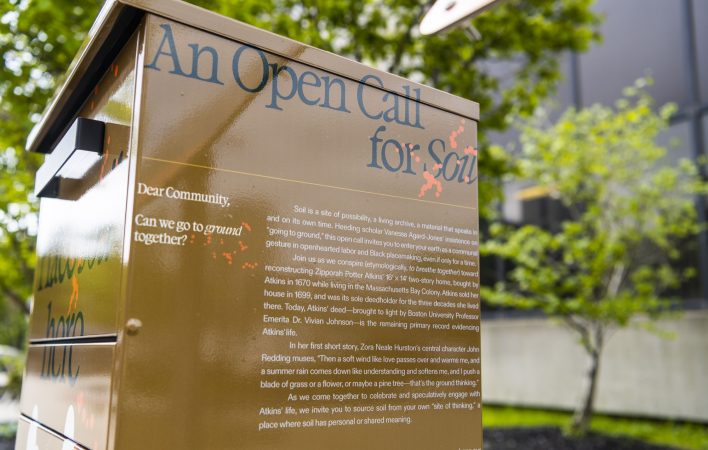
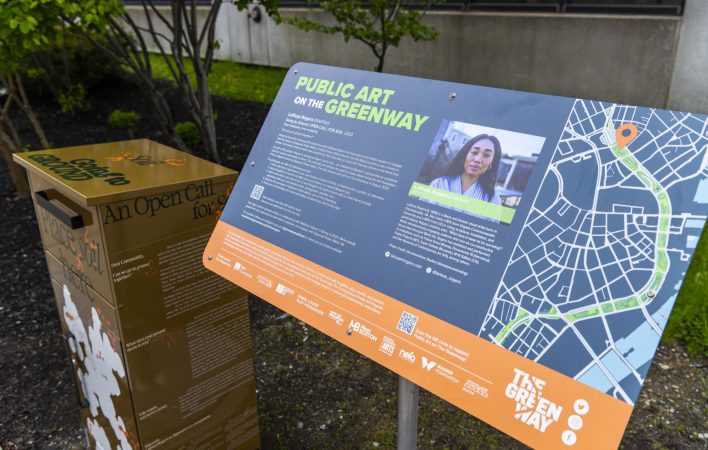
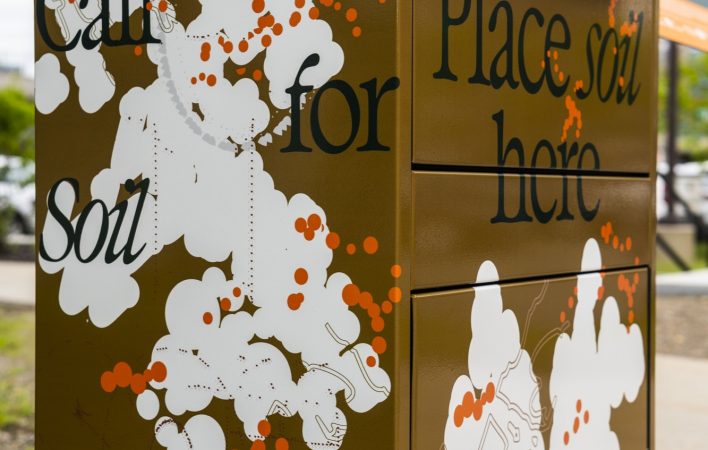
SOIL SUBMISSIONS ARE NOW CLOSED. Thank you to everyone who participated, your contributions to this piece are greatly appreciated! Read the artist’s full Open Call for Soil Invitation here.
Submissions were collected both via mail and in person at two soil drop-off mailboxes located at Boston’s City Hall Plaza and at The Greenway Offices. Participants were encouraged to include a note with their submissions, detailing anything they wanted to share about the soil.
In total, we received over 50 submissions of soil from 12 states, 4 countries, and 3 continents, which were used in the creation of the earthen blocks forming the foundation of the artwork.
Photo Credit: Lee-Daniel Tran
Open Call for Soil Language: LaRissa Rogers and MaKshya Tolbert
About the Artist
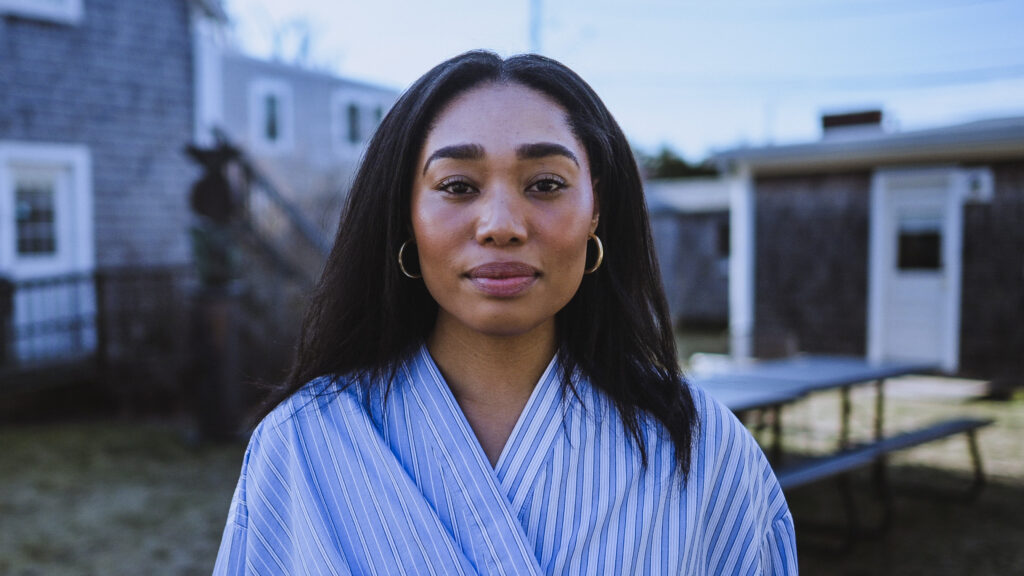
LaRissa Rogers (b. 1996) Rogers is an artist and educator born in Charlottesville, VA. She holds a BFA from Virginia Commonwealth University and a MFA from the University of California Los Angeles. Rogers has exhibited and performed in institutions such as Super Dakota (Brussels), Fields Projects (NY), M+B Gallery (LA), LACE (LA), the California Museum of Photography, Riverside (CA), The Wattis Institute of Contemporary Art (CA), The Virginia Museum of Contemporary Art (VA), and Documenta 15 (Germany), among others. She received the Visual Arts fellowship at the Virginia Museum of Fine Arts (2022) and The Fine Arts Work Center Fellowship (2023-2024). She held residencies at BEMIS Center of Contemporary Art (2022), and Black Spatial Relics (2022), with upcoming residencies at Skowhegan and Mass MOCA. In 2024, Rogers was named one of Forbes 30 under 30 in Art and Style. She is an Assistant Professor of Art at the University of Virginia, and is currently represented by Super Dakota. Photo Credit: Osemwenkhae Studios.
Project Collaborators
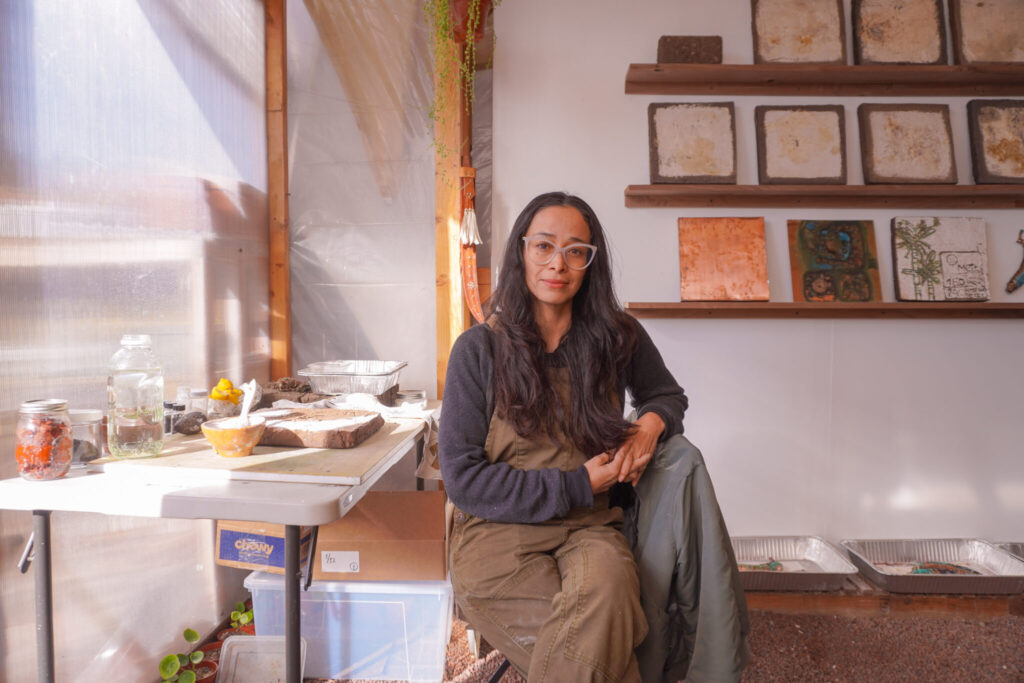
Jackie Amézquita (b.1985, Quetzaltengo, Guatemala) lives and works in Los Angeles, California. She is an artist with a multidisciplinary practice. Her research is articulated through the use of material and forms associated with pre-Columbian cultures. Amézquita creates public performances, installations, and objects that fuse indigenous mythologies with contemporary community engagement.
Amézquita received her M.F.A. from the University of California, Los Angeles, in 2022 and her B.F.A. from Art Center College of Design, Pasadena, CA, in 2018. She has exhibited with The Hammer Museum, LACE (Los Angeles Contemporary Exhibitions) CA, LAND (Los Angeles Nomadic Division) CA, 18th St Art Center CA, The Armory Center of the Arts CA, Vincent Price Art Museum CA, The Annenberg Space for Photography CA, Human Resources Los Angeles CA, MAD (Museum of Art and Design) NY. Amézquita is the recipient of the Mohn Public Recognition Award (2023), Mohn Land Award (2023), Andy Warhol Foundation for the Arts Los Angeles Art Fund (2022), and National Performance Network Fund (2022). Amézquita has been featured in the Los Angeles Times, ARTnews, and The Art Newspaper, LA. Weekly, hyperallergic, Walker Art Center magazine. Photo Credit: Juan Silverio.
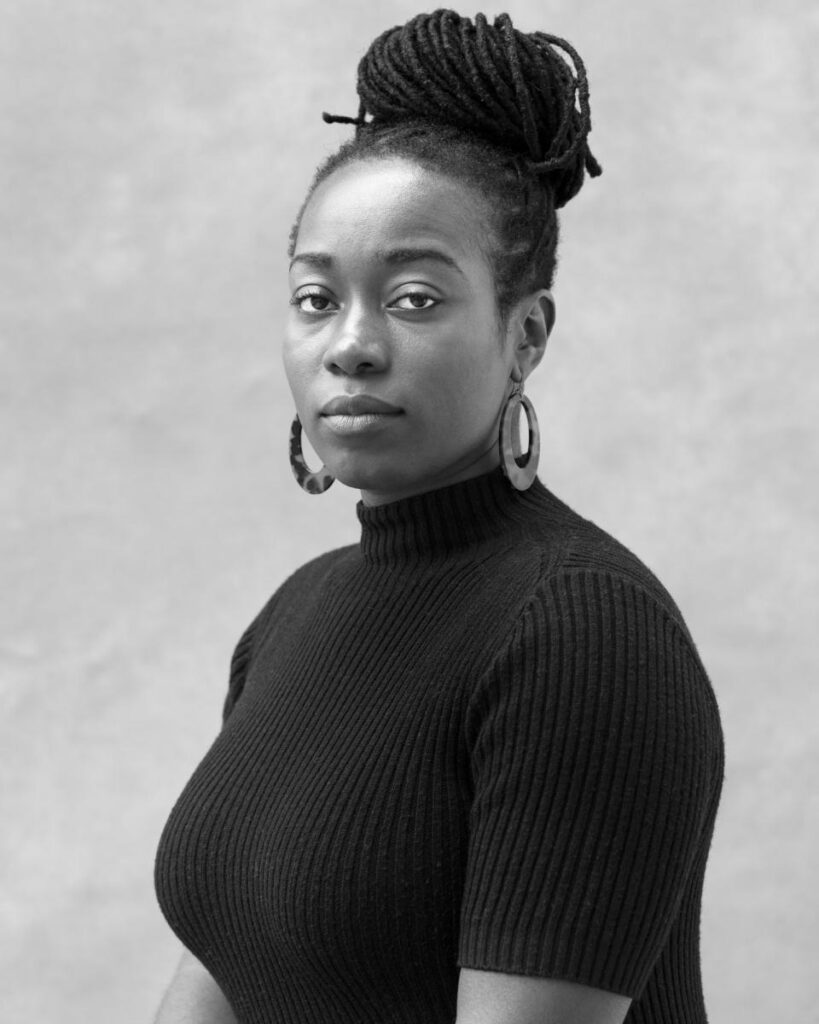
Zalika Azim is a New York based artist and educator with ancestral roots in Aiken, South Carolina and Port of Spain, Trinidad and Tobago. Her conceptual practice explores the tensions between personal and collective narratives (both known and indecipherable) in order to explore black movement, belonging, and possibility.
Azim received a BFA in Photography & Imaging from Tisch School of the Arts, New York University, a BA in Social and Cultural Analysis from New York University, and a MFA in Photography from the University of California Los Angeles. Azim’s work has been presented with institutions such as the New Wight Gallery, The Mistake Room, San Luis Obispo Museum of Art, Milwaukee Art Museum, Gagosian, Welancora Gallery, The International Center of Photography, The Maryland Institute College of Art, and the African American Museum in Philadelphia. Azim was recently appointed as the 2023-2024 St. Elmo Arts Fellow, in the Department of Art and Art History at The University of Texas at Austin, and will be in residence starting this Fall. Photo Credit: Cory Rice.
Project Contributors
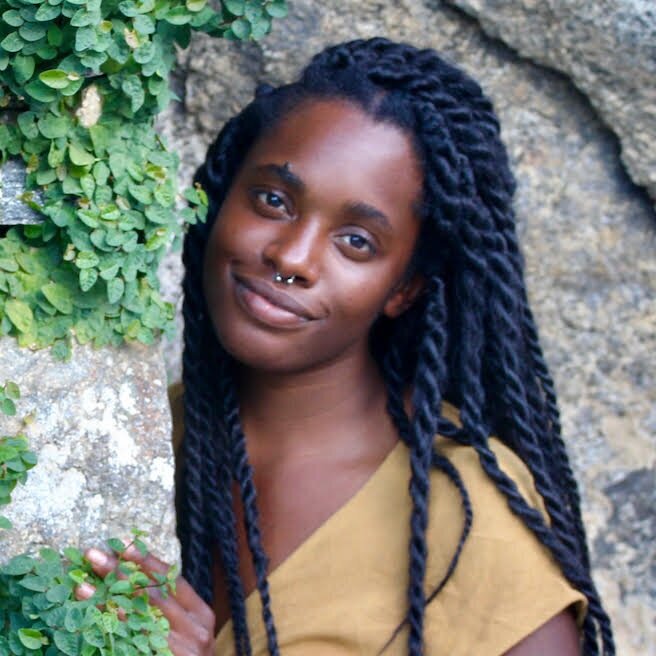
MaKshya Tolbert (she/they) is a Black femme poet, potter and land worker who recently made her way back to Virginia. Tolbert contributed to the Going to Ground project via writing support on the Open Call for Soil letter.
In town, MaKshya chairs the Charlottesville Tree Commission, and is an MFA Candidate in Creative Writing at the University of Virginia. She is the 2024 Guest Curator for New City Arts’ 2024 Fellowship Season. Her recent poems and prose have been featured in Interim Journal, Emergence Magazine, RHINO Poetry, West Branch Magazine’s Slow Violence special folio, 20.35 Africa, Earth in Color, Cake Zine, Poets for Science, Odd Apples, Deerfield Library’s Queer Poem-a-Day series, and 2023 Best of the Net Anthology. They have poetry and prose forthcoming from Nightboat Books, The Kenyon Review, and Campfire Stories: Volume III. In her free time, she walks along Charlottesville’s Downtown Mall, or is ‘elsewhere’ –where Eddie S. Glaude, Jr. calls “that physical or metaphorical place that affords the space to breathe.”
A Special Thank You to Our Supporters
Project support for Going to Ground is provided by Mass Humanities, the National Endowment for the Arts, and the New England Foundation for the Arts.
This project is also supported by the Transformative Public Art Grant from the Mayor’s Office of
Arts and Culture and the City of Boston with the support from the Mellon Foundation.
Public Art on The Greenway is made possible with major support from the Barr Foundation, Goulston & Storrs, the Greenway Business Improvement District, the Mabel Louise Riley Foundation, Meet Boston, and the Wagner Foundation.
Additional support is provided by the Deborah Munroe Noonan Memorial Fund, Bank of America, N.A., Trustee.
Special thanks to our collaborator, Yotel and JetBlue.

About The Greenway and the Conservancy
The Greenway is a contemporary public park in the heart of Boston. The Greenway welcomes millions of visitors annually to gather, play, unwind, and explore. The Greenway Conservancy is the non-profit responsible for the management and care of The Greenway. The majority of the public park’s annual budget is generously provided by private sources.
The Greenway Conservancy’s Public Art Program brings innovative and contemporary art to Boston through free exhibitions that engage people in meaningful experiences and dialogue with art, each other, and the most pressing issues of our time. Past Greenway exhibitions can be viewed on the Conservancy’s website.
